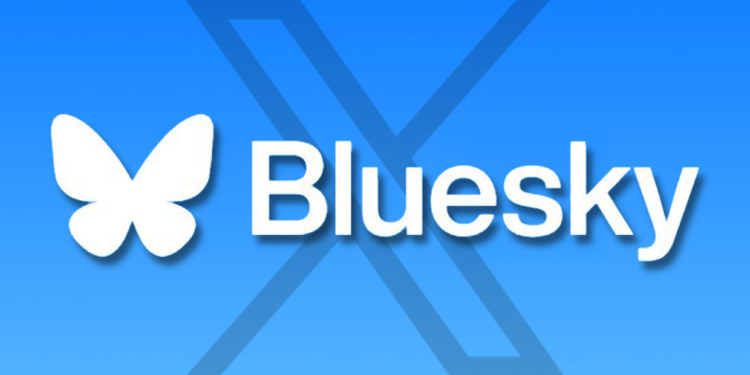In recent days, a remarkable transformation in the popularity of a lesser-known social media platform named Bluesky has occurred. While this considerable surge in interest may be linked to the outcomes of the U.S. presidential elections, there is evidence to suggest that Bluesky was already expanding its user community prior to those events.
One contributing factor is the exodus of users from Twitter, now branded as X, following Elon Musk’s acquisition of the platform in 2022. A significant number of users have sought refuge in alternative social media networks, with Bluesky emerging as one of the primary beneficiaries of this migration from X.
What is Bluesky?
Bluesky is a decentralized social networking service that originated as an internal initiative in 2019 by Jack Dorsey, who was then CEO of Twitter. The acclaimed programmer assembled a compact group of developers to explore potential new standards for the social media landscape. This may account for the platform’s aesthetics resembling that of early Twitter before it transformed into X.
Beyond its interface and functionality, the name “Bluesky” draws inspiration from the microblogging platform, with CNET indicating that the developers conceived the name while envisioning the Twitter bird icon soaring “freely in an open blue sky.”
Mapping the extraordinary growth of Bluesky
Bluesky transitioned to being an independent entity in 2021, appointing Jay Graber as CEO. The platform initially operated under an invitation-only model in 2023. Under Graber’s direction, the network successfully expanded its user count to 3 million prior to opening registrations for everyone in February 2024.
Notably, Bluesky managed to grow its user base even in the absence of a forceful marketing strategy, primarily by serving as a viable alternative to X. After X faced a temporary suspension in Brazil at the end of August this year, Bluesky welcomed approximately 2.6 million new users within a week, with the company noting that 85% of these new global users were from Brazil.
Moreover, as Musk continued to modify X’s policies, the platform saw a continual loss of users who subsequently gravitated towards Bluesky. For example, when X disclosed changes concerning how blocked accounts could access a user’s public posts in October, Bluesky registered an influx of 500,000 new sign-ups the following day.
In the week after the November 5 election, Bluesky added 1 million new accounts, elevating its total user count to over 15 million. Recent data suggests that Bluesky has surpassed 19 million registered users, marking a significant increase from the 10 million recorded in September, according to NDTV.
How Bluesky is managing its newfound popularity
As a relatively modest application, Bluesky presently lacks the capacity to accommodate such a rapid influx of users. Last Thursday, the company encountered a global outage that left users across various regions unable to access their feeds or receive notifications. As reported by the BBC, the situation was rectified the same day, but the company could not guarantee that a recurrence would not happen.
Another challenge that has arisen alongside Bluesky’s increased popularity is the surge of trolls, spam, and fraudulent accounts on its platform. Just last week, it received a staggering 42,000 moderation reports within a single day. In response, the company announced plans to recruit additional moderation staff and implement email verification for new users signing up.
More than just its resemblance to the now-defunct Twitter, Bluesky’s appeal stems from the company’s more rational approach to social networking. Through its decentralized framework, users maintain complete control over their data and interactions—an aspect X has compromised with its policy revisions. Overall, Bluesky appears to be on a promising trajectory towards becoming a substantial player in the social media arena, as long as it can keep pace with the increasing demand.


